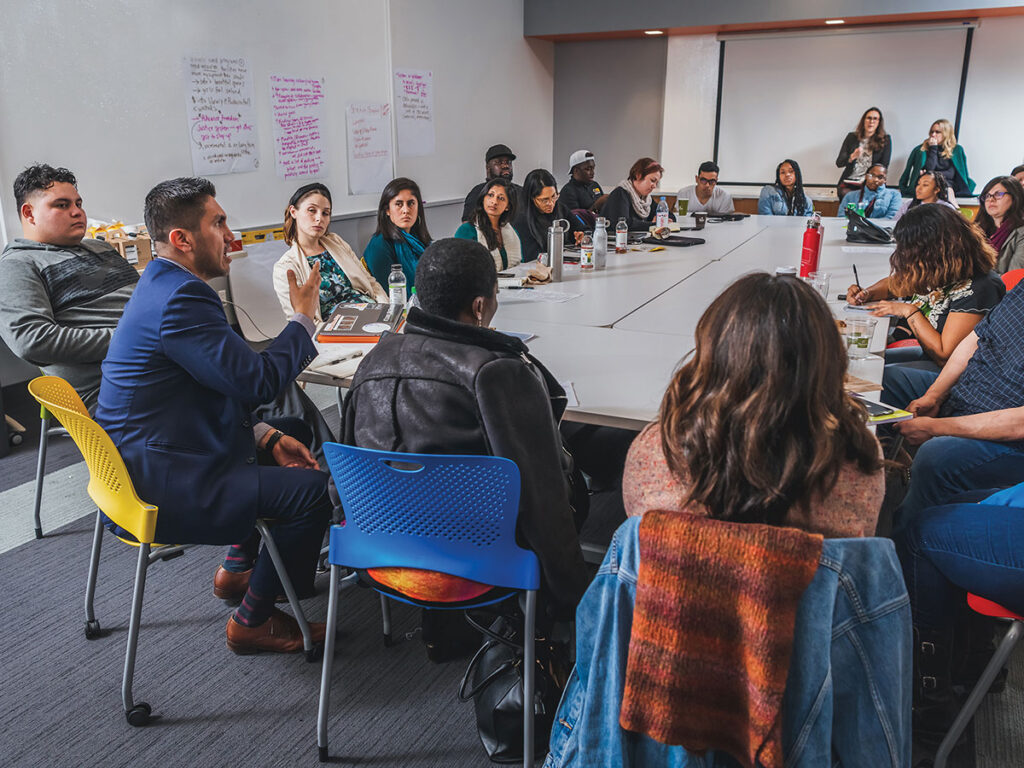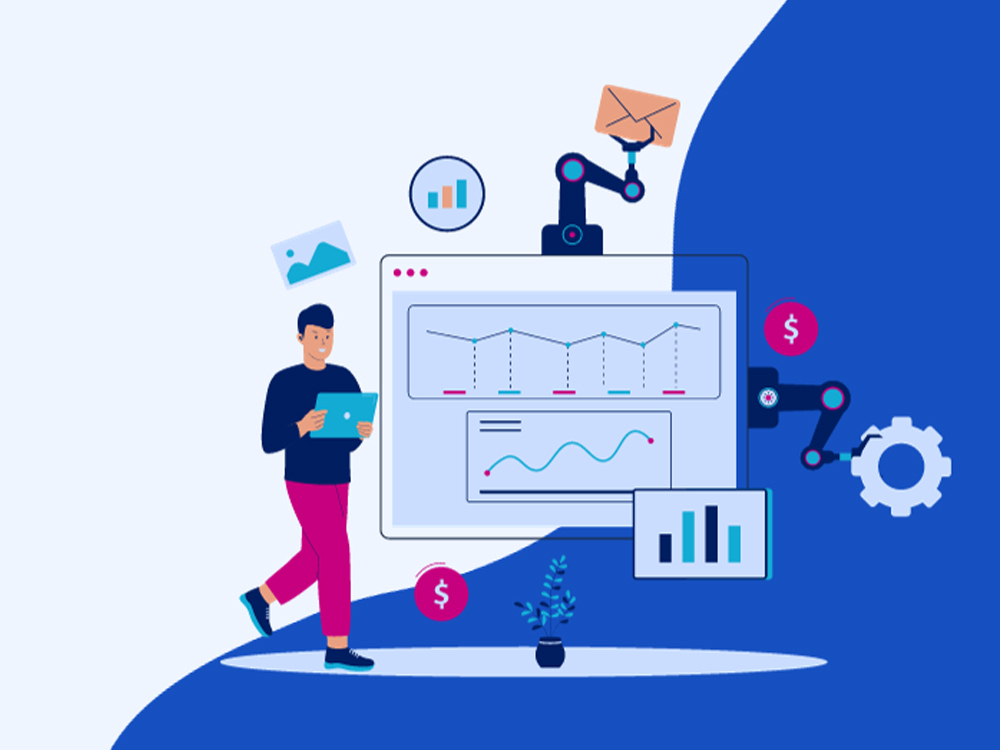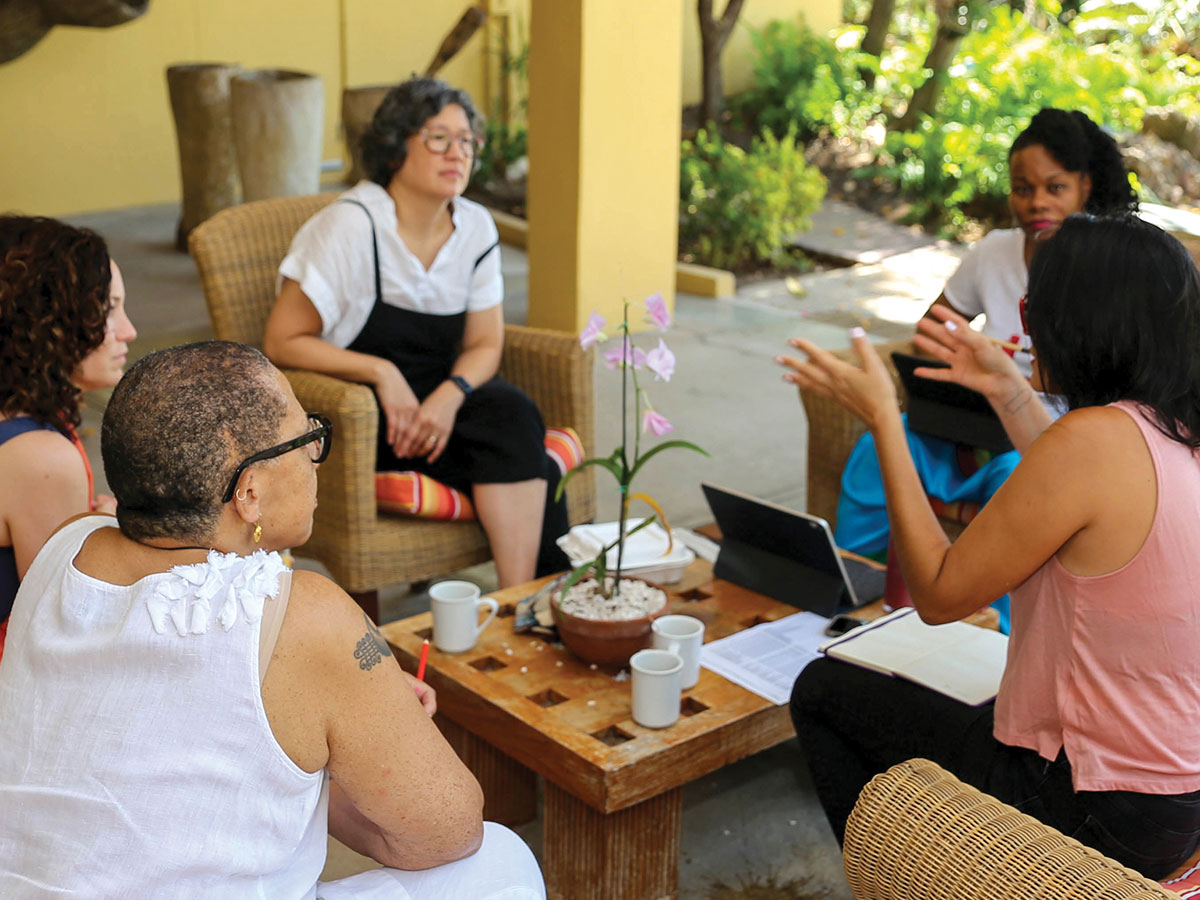
Let’s face it: Change is hard, and both people and institutions often struggle to implement even simple shifts. But grantmaking organizations have the power to change their ways and disrupt the status quo. In the last two decades alone, we have seen an increased provision of general operating support and an openness to risk that hadn’t been witnessed before. We’ve seen a rise in support for small, grassroots organizations and for organizations led by people who identify as Black, Indigenous, or a person of color. Though the calls for flexible and trust-centered grantmaking started long before the various 2020 crises, that’s when many funders changed their grantmaking processes, and relatively quickly.
Grantmaking organizations must continue to evolve their practices and funding strategies if they are to remain relevant and achieve their full potential. They must change to meet evolving community needs and to drive equity and opportunity. Additionally, grantmaking processes and practices must evolve to be more streamlined and less burdensome, as some nonprofits are now deciding not to apply for funding if an application process is too time consuming or if reporting requirements are onerous. The world is continuously changing—community issues change and new technology merges—and grantmaking organizations must also evolve.
Grants management professionals are poised to lead change within their organizations and for the field, given that their roles are found at a critical nexus point within philanthropic institutions. Uniquely positioned between people and processes, they have access to insights about their institution’s giving patterns and can help advocate for more equitable processes while identifying systemic issues that might perpetuate biases. They are the ones who connect the dots across knowledge, relationships, and systems to improve grantmaking decisions and designs.
What are the requirements and conditions for change to be sustainable?
- Support from organizational leadership
- Understanding and buy-in from internal stakeholders
- Financial resources Input from any external stakeholders who will be impacted
- Data that can be transformed into information and knowledge that can be used in making informed decisions
- Time to analyze data, information, and knowledge; to identify options and discuss the pros and cons; and to make decisions and plan for implementation
Grants management professionals focus on ensuring their grantmaking processes include an effective vetting procedure, streamlined grantee record-keeping and monitoring, and high-quality customer service. At the same time, they are embracing the evolution of their roles and function as process specialists, data analysts, relationship experts, troubleshooters, and quality control officers.
Below are examples of how some of PEAK’s member organizations have moved beyond the status quo in their grantmaking practices in recent years.
Program-related investments
Program-related investments (PRIs) allow philanthropic organizations to make low-cost capital (e.g., loans) available to nonprofit organizations or social enterprises that align with the funder’s mission. The capital is typically returned to the foundation with some interest, but financial gain is never the primary purpose. Although PRIs are not a new funding strategy, more and more foundations are choosing to use some of their endowed funds to offer PRIs in addition to traditional grants.
Earlier this year, the California Wellness Foundation invested $1.5 million in Liberty Hill Foundation, a progressive funder based in Los Angeles. That investment is being used to provide bridge loans to social justice nonprofits in Los Angeles that are facing ongoing financial challenges because of delays in payments on government contracts. PRIs designed to serve as bridge loans are important because government agencies are at times running behind on making payments by two to four months and possibly even more, jeopardizing a smaller nonprofit’s financial strength and resilience.
The Gates Family Foundation of Denver began making PRIs in 2014 as part of a mission-aligned investment strategy. In 2020, Gates used its balance sheet to guarantee a loan totaling $12.5 million from FirstBank to Colorado’s three Small Business Administration-approved nonprofit lenders (Colorado Lending Source, Colorado Enterprise Fund, and Dreamspring), which allowed them to make Paycheck Protection Program (PPP) loans to thousands of small businesses across Colorado, including many minority-, women-, and veteran-owned small businesses during the COVID-19 crisis. All loans guaranteed by this PRI were fully repaid by July 2021.
A different approach to capacity building
Although it goes without saying that what nonprofit partners need most is multi-year flexible funding to support operations, philanthropic organizations can provide access to non-traditional resources that have the potential to have transformational impact. Nonprofits often need highly skilled talent to support a variety of projects, such as setting up a new database to collect data about those they serve, the services provided, and the impact of their work. Another common need is related to marketing, branding, and communications. While both examples are important areas of work, hiring a consultant can be expensive, and nonprofits may at times prioritize their unrestricted funding for more pressing needs. This is where some outside-the-box thinking can yield incredibly positive results for those involved.
The loaned executive model, in which one organization “loans” one of its staff members to another organization for a specific purpose and a predetermined period of time, was introduced in 1971 by presidential order to support the Combined Federal Campaign, the official workplace giving campaign of federal government agencies. It has since spread to the for-profit and social sectors where we see private-sector and philanthropic talent lent out to support nonprofit organizations.

At the Rogers Family Foundation, foundation staff—who are not a part of the program staff—share their knowledge, skills, and experience with nonprofit partners. One example is the foundation’s deputy director working with a grantee to identify and analyze student outcome data to understand progress toward goals and support the grantee’s advocacy campaigns. Other staff members have also provided support by writing technical copy for grantees’ websites and regularly connecting grantees to new funders. These experiences strengthen the staff’s connection with and understanding of the foundation’s mission while allowing them to have a direct impact on a nonprofit partner’s success.
Taproot and Catchafire are two organizations that serve as a bridge between skill-based volunteers and nonprofit partners. Both provide opportunities for nonprofits to post projects for which they need skilled expert support, and both promote the volunteer opportunities to their networks, thus connecting volunteers who want to share their professional skills and expertise with nonprofits.
The Archstone Foundation provides access to Catchafire’s platform for grantees as well as organizations that did not receive a grant, allowing them to address some of their capacity-building projects. For one declined applicant, the first 18 months of using the platform resulted in over 40 projects and calls, valued at over $160,000 in consulting expenses. Twelve months into using the platform, the declined applicant decided to apply for a grant once again, and this time they were successful in receiving support to develop a comprehensive client tracking tool. Using Catchafire’s volunteer-based support, they implemented human resources and financial best practices, enhanced their web presence, and created several videos that helped tell their story.
Rightsizing grantmaking processes
PEAK’s Narrow the Power Gap Principle calls on grantmakers to adopt policies and practices that cede power, generating more balanced partnerships. This is done in part by examining grantmaking processes to identify areas for improvement, including decreasing the burden on nonprofit partners by rightsizing the application process and reporting requirements.
In September 2017, the Libra Foundation hired its first executive director, an action that led them to implement practices that center grantee partners’ work and expertise. During this evolution of the foundation, Libra staff streamlined processes, removed the final report requirements, and examined what labor could be shared between grantees and the Libra team. As an invitation-only funder, Libra practices trust-based approaches that facilitate relationship building with grantees, particularly through annual check-in calls. While Libra does not require end-of-year reports, they invite grantees to share optional materials that will help Libra staff learn more about their work, such as reports written for other funders.

To prioritize relationship-building and reducing the burden on grantee partners, WomenStrong International recently made a number of changes to its grantmaking processes after learning about their partners’ preferences. Requests for formal written proposals from potential grantees have been replaced by a series of conversations with WomenStrong staff. Grantmaking staff also determined that there was no need for written reports to gather qualitative data, as program staff had so many touch points with grantees through their learning lab and capacity strengthening activities, which provide all the information the organization would have asked for in written reports. These changes are more aligned with WomenStrong’s own values, as the organization makes a practice of ceding power to grantees through its trust-based funding and by taking direction from grantees on key activities. As an example, grantee partners planned and led or coled all of the sessions at WomenStrong’s partner-staff convening in Morocco in September 2023.
The Grove Foundation believes equity is central to long-lasting change and an inclusive approach to improving lives. Like Libra, staff at Grove invest time in developing long-term partnerships with nonprofit partners, as they are an invitation-only funder. They refrain from burdening grantees with excessive document requirements and instead focus on ensuring nonprofit partners are funded and supported. Staff identify potential partners through research, recommendations from current grantee partners, and their network of equity-focused funders. When Grove transitioned to a new portal in 2018, grantees were offered—and they declined—access to the portal. That means Grove’s staff enter all the information in the portal, saving their grantees countless hours.
Implications for grants management professionals
As processes and practices evolve, so must we. At first, adjusting how you operate may not seem possible. You might ask yourself, “How can I track a PRI or the pro-bono service a nonprofit partner receives in my grants management system?” Take a step back before setting up a new system or a completely new workflow. Be open to experimentation with some pilot grant efforts rather than thinking you need to have the process perfected first. Taking the time to examine the situation at hand will benefit you in the long run. Identify possible solutions, test them, and decide on the best way to move forward. Roles might have to shift, but rather than looking at the new opportunity as a burden, think of the impact your organization can have on your nonprofit partners and communities they serve.
Image: Liberty Hill Foundation, a California Wellness Foundation grantee, works in collaboration with many community partners to support and address the intersection of LGBTQ+ and racial justice issues in Los Angeles. Photo courtesy of Liberty Hill Foundation.



